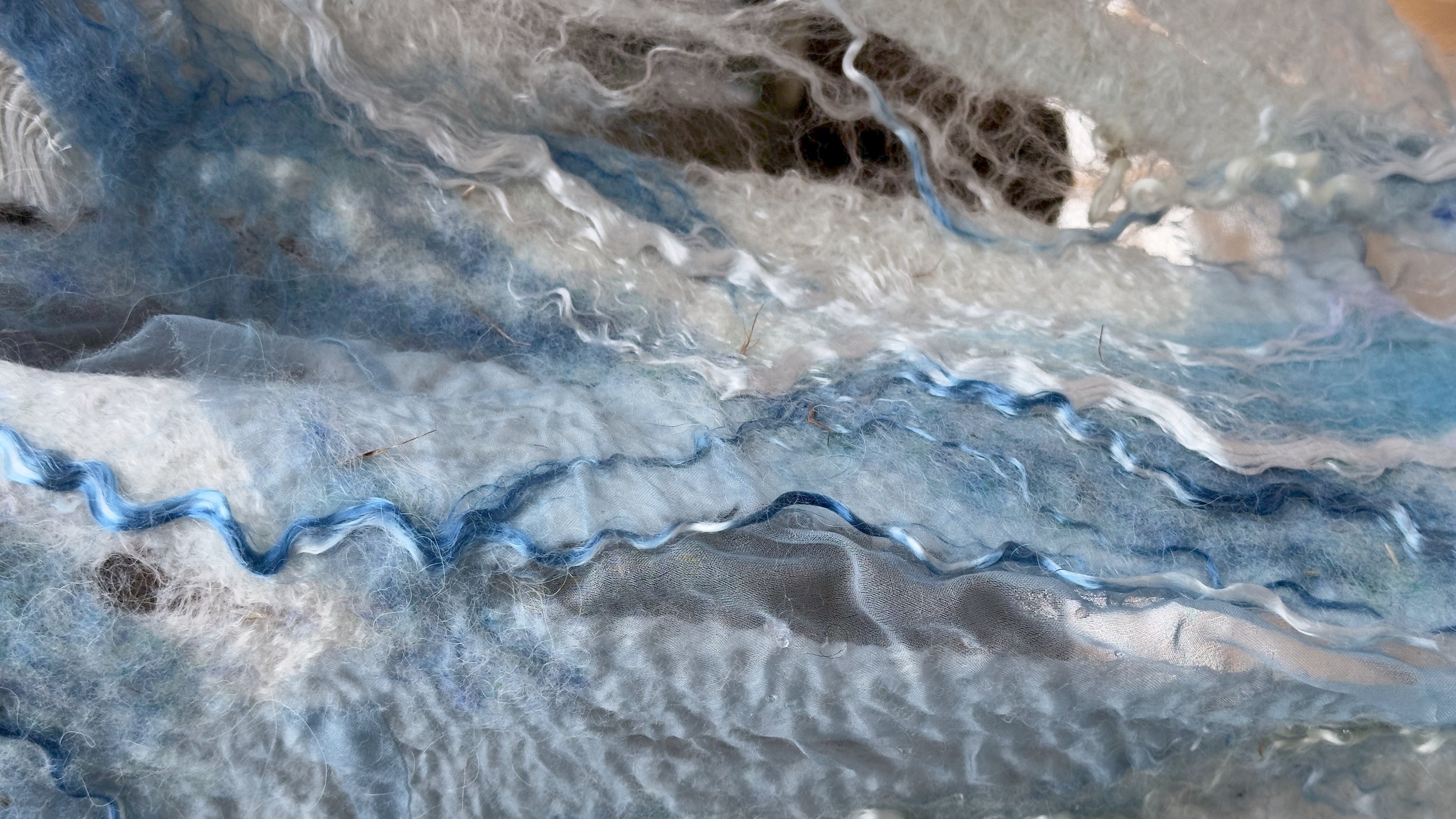
FAQs
-
Wool fiber has a complex physical and chemical structure that has evolved over billions of years, enabling sheep to thrive in extreme climates. The fiber’s surface is covered with microscopic scales called cuticles that open and close in response to changes in moisture content and temperature.
Wetting wool with hot water causes the cuticles to open. Agitation and pressure, when combined, cause the fibers to tangle, become interlocked, and eventually shrink irreversibly, resulting in the matted, non-woven material known as Felt. The more it is rolled, pounded, and manipulated in this wet phase, the more it shrinks and condenses, increasing its structural integrity and durability.
-
True Felt is historically made of pure sheep’s wool. The quality of Felt depends on the quality of the fibers, as well as the felting and finishing techniques used. With hundreds of breeds around the world, there’s a wide range of felt-ability with each. Any fiber with a cuticle has the potential to be felted (these include camel, yak, goat, alpaca, llama, vicuña, (to name a few). Results will be extremely variable, and making test samples is the best way to determine feltability with any fiber.
Fibers that don’t have cuticles - like rabbit or beaver fur - may be felted only after a solution of hydrogen peroxide and nitric acid is combined to create scales (in place of the cuticles) on the fibers.
There are many contemporary felting techniques that incorporate non-felting fibers- like bamboo, silk, lyocell, or soy. However because these fibers do not have cuticles, they have to be blended with at least 50% pure wool fiber to successfully create a felted textile.
BE AWARE: In this modern era of misinformation many textiles are called “felt” but they are not - these are frequently non-woven textiles made from synthetics or other non-organic materials. True Felt is made from wool.
-
Wool differs from synthetic fibers in many ways - most importantly in origin. Wool is an organic fiber that grows continuously on a sheep. Synthetics are formed through a chemical process and are human made. Some of the other significant differences include (but are not limited to) environmental impact, breathability, insulating properties, durability, odor resistance, flame retardancy, cellular structure et al.
While synthetics can mimic some traits found in wool, the unique set of characteristics that naturally occur together in wool fiber has never been replicated as a whole in a single synthetic material.
-
There are hundreds of sheep breeds around the world. Each breed’s wool has different physical qualities with variations in cuticles - ranging from fine to coarse. These qualities impact the felting behavior and characteristics of the resulting Felt.



